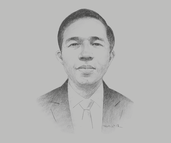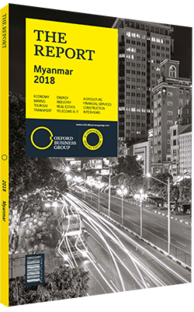U Bo Bo Nge, Deputy Governor, Central Bank of Myanmar: Interview

Interview: U Bo Bo Nge
How do you expect the modernisation of the payments sector to drive greater financial inclusion?
U BO BO NGE: For the first time, the CBM installed a high-value payment system for those with account relationships with us. This system has operated smoothly since January 2016, handling large-value interbank payments in real time. The retail payment system using debit cards has been in operation for several years and the latest system upgrades are due to be completed in 2018, reducing transaction delays in retail payments.
The next step is to further develop retail payment systems through the use of mobile phones. We are learning from the experiences of other countries in setting up such systems and looking to foster competition to bring down the costs for consumers. We must also guarantee cross-network operability from the outset so that customers of one network can make payments or remittances to customers of another network. The aim is to carefully design a national payment framework to facilitate the emergence of these retail payment systems and bring their synergies into play. Potential investors are very interested in developing mobile payment using a Quick Response Code (QR code). Given the prevalence of smart phones, such a system could enable payments to be processed more quickly and securely. We need to standardise a QR code to avoid too many codes representing different banks or payment providers. When people start realising that a payment can be made easily and safely through a phone or payment card, a growing number will open an account.
When can we expect to see Myanmar adopting alternative financing mechanisms?
BO BO NGE: The CBM used to provide substantial financing for budget deficits. In my view, this was the main reason that the public lost trust in the local currency and started hoarding foreign currencies and assets such as gold and real estate. In recent years, the state made a strategic decision to reduce dependence on CBM financing. In 2016-17, about half of the deficits were still financed by the CBM, but CBM financing used to be much higher. The current target is to cut the CBM’s deficit financing to 30%. Given the success of the recent Treasury security auctions and the demand for government notes, I believe the 30% target could be achieved in 2018. In addition, inflation figures are at historic lows and the exchange rate is stable.
As for accessing international debt markets, I do not see a need to rush. First, we need to see if local debt issuance can cover routine state spending. The focus should also be on developing timely and efficient debt servicing practices, and honing the necessary skills in cash flow monitoring and planning. We also need to mobilise sufficient tax revenues to build up the credibility of our debt servicing capacity.
What reforms can help reduce money laundering?
BO BO NGE: The priority should be to reduce heavy reliance on cash transactions. The modernisation of the payment system is aimed at substantially reducing that reliance. Another priority lies in cooperation between our agencies and the Financial Action Task Force on Money Laundering during the review process. The review is required for Myanmar to conduct transactions with global banks. We must also intensify cooperation between the CBM, the Financial Intelligence Unit, the Attorney General’s Office, and domestic banks and foreign banks. Currently, we are also in the process of licensing foreign remittance services, for which we are working in coordination with the monetary authority of Singapore and the Bank of Thailand.
Our intention is to expand that cooperation to other foreign monetary authorities in close cooperation with legal advisers from the US Treasury. We have drafted a regulation so service providers can register and conduct fund transfers officially. Lastly, we are waiting for Parliament to complete amends to the law before proceeding to bring remittance services into the legal fold.
You have reached the limit of premium articles you can view for free.
Choose from the options below to purchase print or digital editions of our Reports. You can also purchase a website subscription giving you unlimited access to all of our Reports online for 12 months.
If you have already purchased this Report or have a website subscription, please login to continue.

